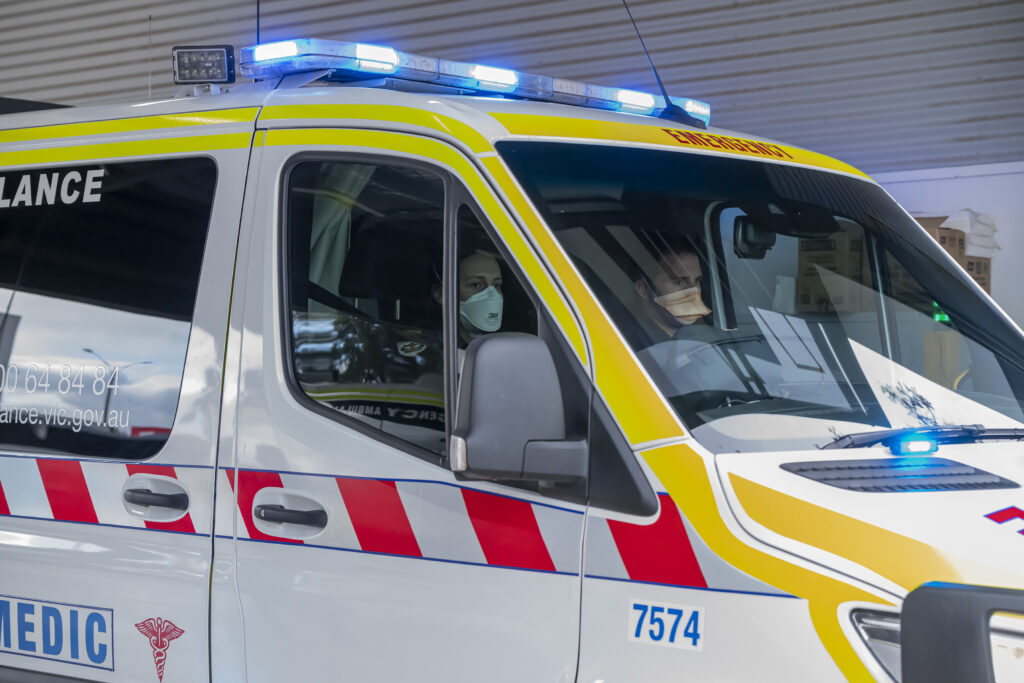News
11th May, 2023
VAU meeting with the Minister for Ambulance Services
Yesterday the Victorian Ambulance Union met with Minister Gabrielle Williams to discuss matters on behalf of our members, in particular our suggestions for reducing demand on ambulance services. Matters discussed included Virtual ED, Triage services, Priority Primary Care Centres (PPCCs), Emergency Services Telecommunications Authority (ESTA), Non-Emergency Patient Transport (NEPT), Ramping, Mobile Intensive Care Ambulance (MICA) and Mobile Data Terminals and Rural Radio Communications.
Virtual ED
- The need for continued investment and expansion of the Victorian Virtual ED network.
- Streamlined user interface for VVED, increased staffing and expansion to NEPT with direction to use this service where appropriate.
Triage services
- Continued investment in this area to ease the workload of on road ambulance crews.
- Expansion and promotion of In Field Referral within the paramedic workforce.
- Improved pathways to refer to and better connect services such as hospital based aged care in-reach services who are limited to certain catchments.
- Review of Triage Services level 3 scripts during periods of high demand to avoid patients being funnelled to the emergency departments.
- Increased utilisation of AV Triage Services by NEPT services to avoid unnecessary transport of patients to hospital when appropriate.

Priority Primary Care Centres (PPCCs)
- A centralised database with information relating to the PPCCs clinical capabilities, locations and opening hours and increased public education and promotion of PPCCs.
- The introduction of Dual Ambulance Attendant Patient Transport crews in AV, to improve access to PPCCs for mobility challenged patients requiring assistance to physically access primary care services.
Emergency Services Telecommunications Authority (ESTA)
- Revisit Revised Ambulance Dispatch (RAD) to build more clinical oversight into the ESTA call-taking process and reduce unnecessary cases for on-road paramedics.
Non-Emergency Patient Transport (NEPT)
- Further expansion of AV’s NEPT resources and de-privatisation of NEPT to allow for consistency across services, improved ongoing training and clinical support.
- Introduction of double Ambulance Attendant (ATA) crews NEPT crews alongside the current PTO/ATA crew mix, to handle medium acuity patients including to and from PPCCs.
Hospitals
- A ‘zero tolerance to ramping’ model utilised in Leeds Hospitals in the UK which reduced hospital transfer times during the peak of the COVID pandemic when all other hospitals in the UK experienced a significant increase in transfer times.
- Senior doctors stationed at triage with a view to quickly offload and return ambulances to the road.
- Emergency department staff take ownership of ambulance patients once they arrive at the hospital and have a dedicated ‘ambulance team’ on site to provide immediate care to ambulance patients.
- Compliance with ’Fit to sit’ are assessed as clinically appropriate and safe to be treated in a chair rather than a bed (a chair being the default unless assessed as needing a bed).
- The introduction of a ‘wait and return’ policy at hospitals for NEPT patients needing catheter changes or wound assessments who can be treated on the ambulance stretcher and returned to an aged care facility quickly, negating the need for the patient to be offloaded onto a hospital bed or to wait for a hospital bed.
- Improvements in technology to connect rural community hospitals with VVED and use of paramedic and nurse practitioners to operate from them when GPs are not available.
Mobile Intensive Care Ambulance (MICA)
- All MICA resources to be placed on a Priority 0 dispatch warning at all times, therefore restricting MICA dispatch to the most urgent of cases only as well as clinician and crew request.
Mobile Data Terminals and Rural Radio Communications
- Rollout of MDTs to all rural ambulances and continued upgrade of rural radio network to ensure crews receive vital information including occupational violence risk and patient information that may allow crews to explore alternative pathways.